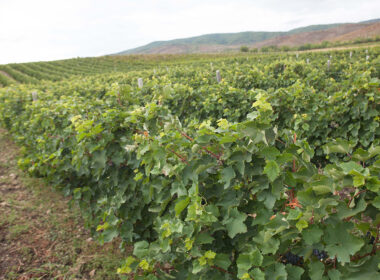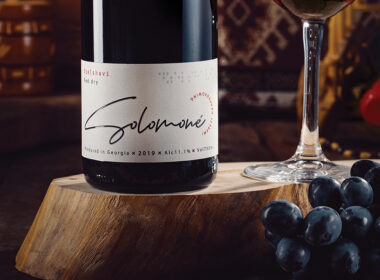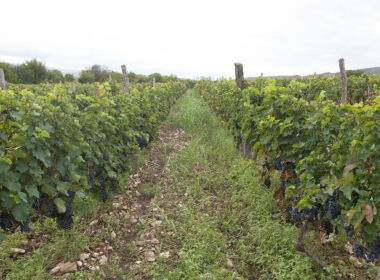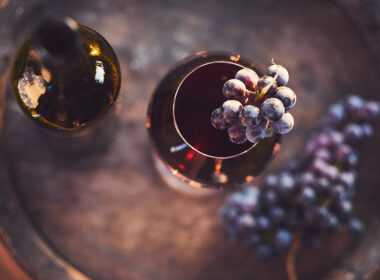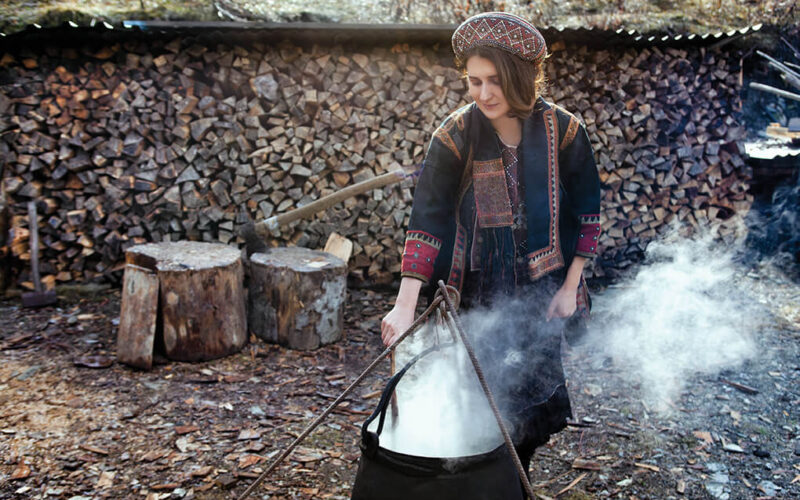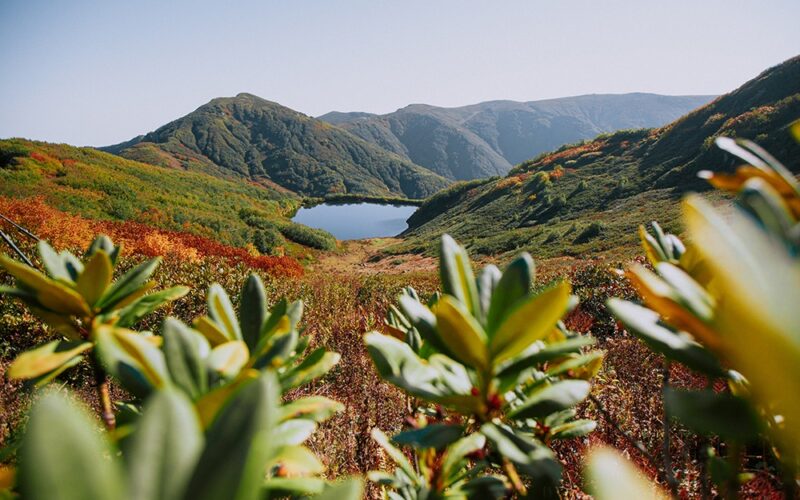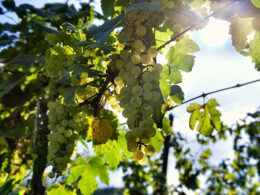Keti Kvichidze
Our winter culinary adventure will take place in Pshavi – birthplace of great Georgian poet Vazha-Pshavela. He holds a special place amongst poets of the world and if you haven’t yet read any of his works, our adventure will inspire you to pick one of his books up.
Pshavi is an extraordinary place, where everybody speaks in rhyme. Local speech sounds like a song. Century-old traditions are still practiced here. For instance, each village has their own head (“Khevisberi” in Georgian). Each community has its own icon that they pray and sacrifice lambs to. Here, New Year is celebrated on the 14th of January, instead of the 1st (old style) and they call it “Tseltsadoba”. New Year’s Eve is called “Litanioba”.
I’ve mentioned Pshavi traditions, because the dish I want to tell you about is an inseparable part of local rituals. The same dish has also gained world recognition, with an evergrowing demand, and this dish is called khinkali. Some say it comes from Mongolia; some credit it to be Chinese, but let me present my own opinion, which is based on facts and various culinary expeditions.
There are many dishes similar to khinkali – manti, pelmeni, baozi, vareniki, mandu, momo, khingali and more. However, khinkali differs from all with its juiciness, cooking method and associated rituals. We will learn more about each aspect of this magnificent dish in Vazha-Pshavela’s village of Chargali. Marika Razikashvili and her family – Levani Papa, Lela, Nino and Gocha Papa – are our hosts for this journey. Marika tells us that her grandmother’s right hand was bigger than her left, all because of kneading the dough for khinkali. It has to be stiff enough to withhold the boiling process: khinkali has to stay intact.
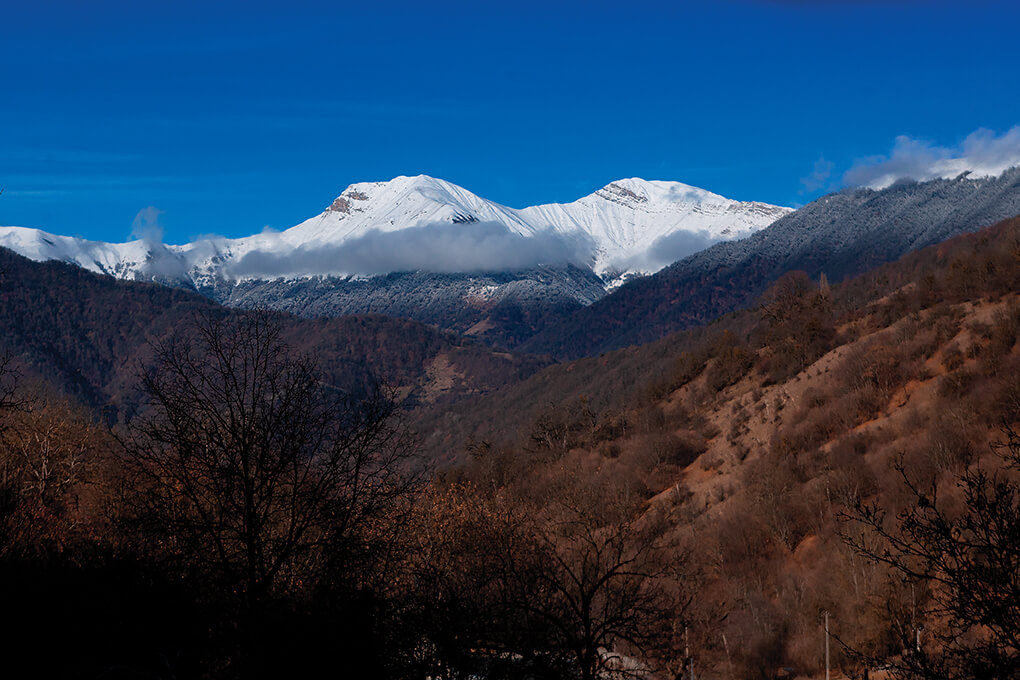
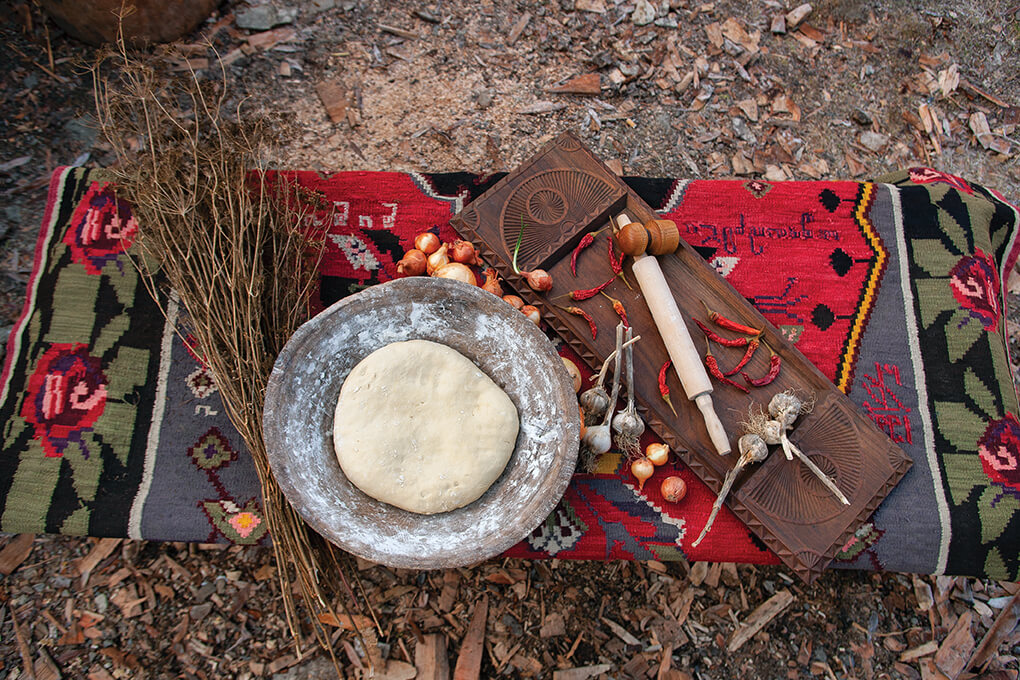
This special kind of dough, called “buff dough” in Pshavi, is kneaded with a strong hand. Flour, plus third the amount of water and that is all you need for khinkali dough: no other additives or yeast. The dough has to rest in a cool place (or a fridge), leaving time to prepare the filling – minced meat.
I will tell you the history of khinkali, while the dough rests: according to a Pshavi legend, a local woman fell in love with a certain man. One day, during his visit, she invented the ritual of khinkali, so they would have more time to spend with each other: first she kneaded the dough, then prepared the filling, and wrapped it folding the dough 19 times. Since then preparing khinkali was considered a woman’s source of pride.
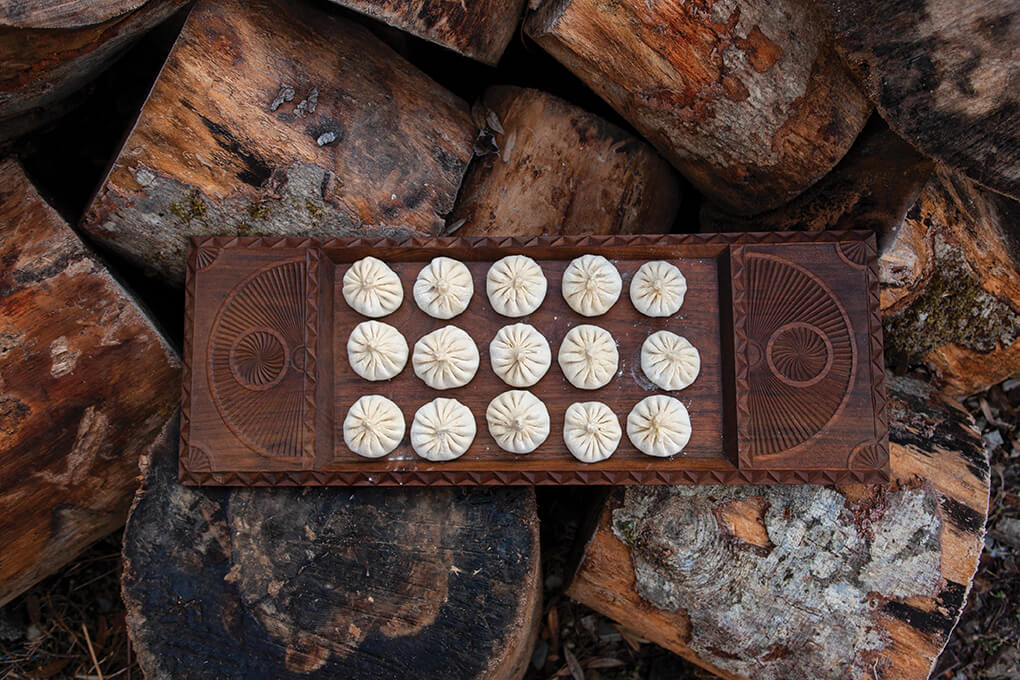
The name “khinkali or khingali” comes from Dagestan and means “a ball of dough” (“gaal”) boiled in water (“khi”). In Dagestan, much like in other regions of Caucasus Mountains, the dough is boiled separately from meat, so it is different from Georgian khinkali, where the dough is filled with meat. Apart from same ingredients, these two dishes have nothing in common.
In Saingilo (another region in Caucasus) it is called “girtsi”. Sulkhan-Saba Orbeliani refers to this dish as “dumis shashki” in his dictionaries.
Each country has their own dish made from dough. In parts of Georgia, for instance, Meskheti, they cook a number of such dishes: a minced khinkali (minced dough boiled in water and consumed with matsoni, cheese or garlic water), tutmaji, tatarberaki and tserokhinkali (minced dough with caramelized onion). There is also khinkali made with apokhti (dried meat), but all of these dishes have little to do with a real khinkali.
A Georgian khinkali is a meat-filled dough ball that has a special meaning attached to it. It was and is consumed in happiness and in grief. When a family started preparing khinkali, they would always invite someone over: a neighbour or a relative. Once prepared, khinkali was first offered to a guest and the head of the family, then the children and lastly to women. Khinkali had to be prepared at least once a week. Wealthy households prepared their khinkali with meat, whereas more modest ones made them with garlic or shibu (a wild, onion-like plant).
Khinkali in Pshavi is only made using minced beef of lamb and never pork. Meat with aromatic herbs – cumin, thyme and mint – and a little bit of added water is what makes khinkali extra juicy and delicious.
When the dough is sufficiently rested, they cut it up with a small cutter, thinly roll it out, put one spoon of filling and fold it up. The importance of folding cannot be stressed enough: the dough has to be folded 19, 13 or 9 times and in a clockwise direction. Once folded, they are thrown into salted water, boiled for 7 minutes.
Thanks to so many folds, khinkali looks like a Georgian symbol of the Sun – Borjgali, with seven rotating wings. This solar deity was always considered a protector of household prosperity and abundance, and it’s logical to assume that khinkali was a ritual dish. It was generally made on Sundays, which was considered to be “the day for the Sun” (“Mzisa” in Georgian).
It was a bad sign if khinkali fell apart during boiling. Khinkali made during funerals was said to “please the souls” of the passed. There was also a special dish for khinkali made during weddings, which was placed before the bride and the groom. During Christmas and New Years, guests would arrive bearing 3 khinkalis. To this day, Tusheti has s special celebration called “Khinklaoba”: the lady of the house prepares large khinkalis and gives one each to all of her neighbours.
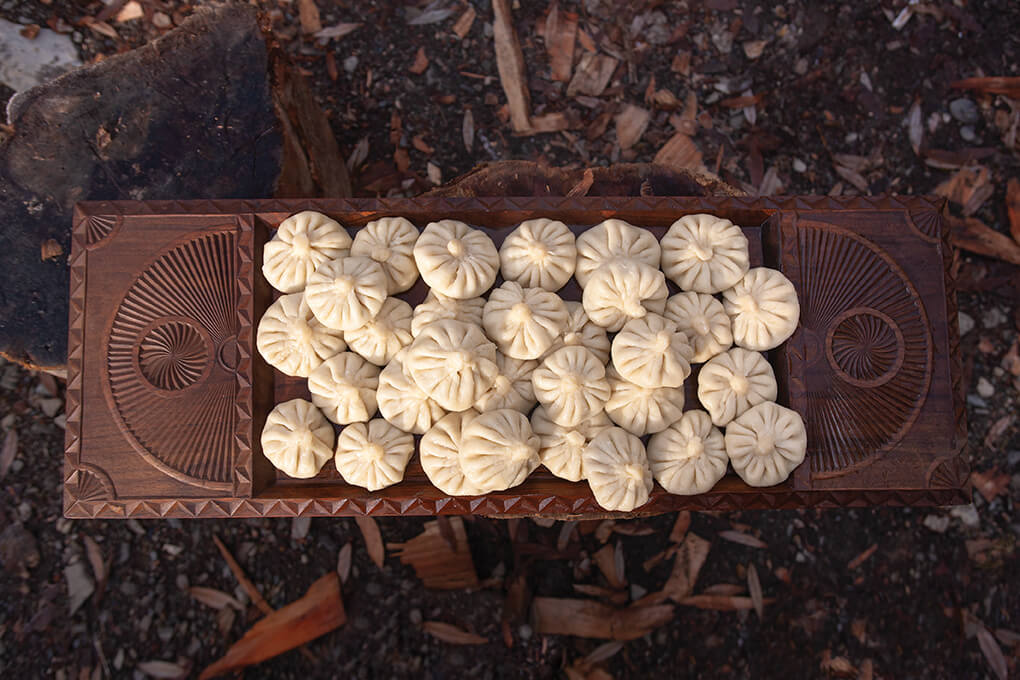
Eating khinkali is a ritual on its own: it has to be consumed in a way that doesn’t let its delicious juicies spill on a plate. Levani Papa tells us that in the old days khinkali was also called “tsibtsura”, which means “holding with 3 fingers”. That is how khinkali should be held and eaten.
There are no grapes grown in the mountains, so the locals enjoy other homemade beverages, like beer or “alud” and “zhipitauri” (an alcoholic beverage made from fruit) with khinkali. Despite their food and drinks being wonderful, locals know to consume everything in moderation. It is part of their culture that they take great pride in.
Khinkali is now ready to be boiled in Marika’s house. With all the anticipation, 7 minutes feels like 7 days. But soon enough, Marika takes khinkali out and places it on a special plate, inviting us to join her in a garden, near a small stream and a large Caucasian shepherd, calmly resting in the shade. We sit there looking over Vazha-Pshavela’s garden, enjoying our delicious meal.
“We are all part of divine harmony expressed in nature. We have to listen to its wisdom, trust its spirit and share its anguish. If we follow our short-lived, materialistic interests in this world, we will be standing on lifeless and mute shores of our existence, comletely alone”. – Vazha-Pshavela

